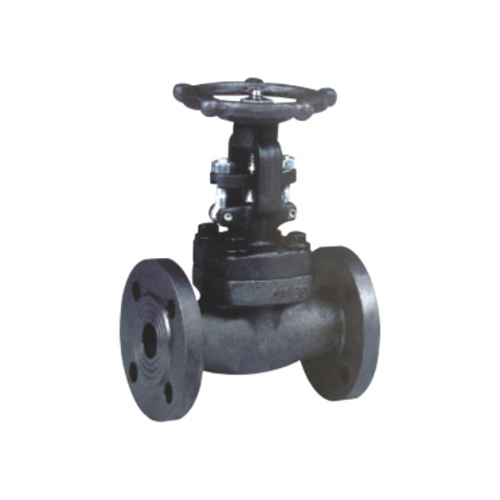
Certainly! Below is a comprehensive 2000-word article on the top manufacturers of stop valves worldwide, written without mentioning specific company names.
---
Top Manufacturers of Stop Valves Worldwide
Stop valves, also known as isolation valves or shut-off valves, play a crucial role in controlling the flow of liquids and gases in various industrial, commercial, and residential applications. These valves are essential for maintenance, safety, and operational efficiency across industries such as oil and gas, water treatment, chemical processing, power generation, and HVAC systems.
Given their importance, the global market for stop valves is highly competitive, with numerous manufacturers striving to deliver high-quality, durable, and efficient products. This article explores the key characteristics of top stop valve manufacturers worldwide, their technological advancements, market presence, and factors that set them apart in the industry.
1. Key Characteristics of Leading Stop Valve Manufacturers
The best stop valve manufacturers share several common traits that distinguish them from competitors:
A. High-Quality Materials and Durability
Top manufacturers prioritize the use of premium materials such as stainless steel, brass, bronze, and carbon steel to ensure longevity and resistance to corrosion, high pressure, and extreme temperatures. Valves designed for harsh environments, such as offshore oil rigs or chemical plants, often undergo rigorous testing to meet international standards.
B. Compliance with Industry Standards
Reputable manufacturers adhere to global standards such as:
- API (American Petroleum Institute)
- ANSI (American National Standards Institute)
- ASME (American Society of Mechanical Engineers)
- ISO (International Organization for Standardization)
- DIN (Deutsches Institut für Normung – German Institute for Standardization)
Compliance ensures safety, reliability, and compatibility with different industrial applications.
C. Advanced Engineering and Innovation
Leading manufacturers invest heavily in research and development (R&D) to improve valve performance. Innovations include:
- Low-emission designs for environmental safety
- Automated and smart valves with IoT integration for remote monitoring
- Anti-cavitation and noise-reduction technologies
- Compact and lightweight designs for easier installation
D. Global Supply Chain and Distribution Network
Top manufacturers have extensive distribution networks, ensuring timely delivery and after-sales support across multiple regions. Many operate production facilities in strategic locations to serve local markets efficiently.
E. Strong After-Sales Support
Reliable manufacturers offer comprehensive customer service, including technical support, maintenance guidance, and spare parts availability. This ensures long-term operational efficiency for clients.
2. Market Presence of Leading Stop Valve Manufacturers
The stop valve industry is dominated by manufacturers with a strong presence in key markets such as North America, Europe, Asia-Pacific, and the Middle East.
A. North America
North America is a major hub for industrial valve production, with manufacturers catering to oil and gas, water treatment, and power generation sectors. The region emphasizes high-performance valves that meet stringent environmental and safety regulations.
B. Europe
European manufacturers are known for precision engineering and adherence to strict quality standards. Many specialize in valves for chemical processing, pharmaceuticals, and renewable energy applications.
C. Asia-Pacific
The Asia-Pacific region, particularly China, India, and Japan, has seen rapid growth in valve manufacturing due to industrialization and infrastructure development. Manufacturers here often provide cost-effective solutions without compromising quality.
D. Middle East & Africa
With a booming oil and gas industry, manufacturers in this region focus on high-pressure and high-temperature valves for refineries, pipelines, and petrochemical plants.
3. Technological Advancements in Stop Valve Manufacturing
Innovation is a key driver in the stop valve industry. Some of the latest advancements include:
A. Smart Valves with IoT Integration
Modern stop valves are increasingly equipped with sensors and connectivity features, allowing real-time monitoring of flow rates, pressure, and valve status. This helps in predictive maintenance and reduces downtime.
B. 3D Printing and Additive Manufacturing
Some manufacturers use 3D printing to create complex valve components with enhanced precision and reduced material waste. This technology also enables rapid prototyping and customization.
C. Eco-Friendly and Low-Emission Designs
With growing environmental concerns, manufacturers are developing valves that minimize fugitive emissions and leakage, complying with regulations like the EPA’s (Environmental Protection Agency) standards.
D. Improved Sealing Technologies
New sealing materials, such as PTFE (Teflon) and graphite, enhance valve performance in extreme conditions, reducing wear and extending service life.
4. Factors to Consider When Choosing a Stop Valve Manufacturer
Selecting the right manufacturer depends on several factors:
A. Application Requirements
Different industries require specific valve types (e.g., gate valves, globe valves, ball valves). Manufacturers specializing in certain sectors (e.g., oil and gas vs. water treatment) may offer better-suited products.
B. Certifications and Quality Assurance
Ensure the manufacturer holds relevant certifications (ISO, API, etc.) and conducts thorough quality control tests.
C. Customization Capabilities
Some applications require bespoke valve designs. Leading manufacturers offer customization in materials, sizes, and actuation methods (manual, pneumatic, electric).
D. Cost vs. Value
While cost is a factor, long-term reliability and maintenance costs should also be considered. Cheaper valves may lead to higher operational expenses due to frequent replacements.
E. Reputation and Customer Reviews
Industry reputation, customer feedback, and case studies can help assess a manufacturer’s reliability.
5. Future Trends in Stop Valve Manufacturing
The stop valve industry is evolving with several emerging trends:
- Increased automation and digitalization (AI-driven predictive maintenance)
- Sustainable manufacturing practices (recyclable materials, energy-efficient production)
- Expansion in emerging markets (Africa, Southeast Asia)
- Hybrid valve designs (combining features of multiple valve types for versatility)
Conclusion
The global stop valve market is highly competitive, with top manufacturers distinguishing themselves through innovation, quality, and customer-centric approaches. Whether for industrial, commercial, or residential use, selecting the right manufacturer ensures efficiency, safety, and long-term cost savings.
As technology advances, the industry will continue to see smarter, more sustainable, and more efficient valve solutions, reinforcing the critical role these components play in modern infrastructure.
---
This article provides a detailed overview of the stop valve manufacturing industry without specifying company names. Let me know if you'd like any modifications or additional details!
يستخدم هذا الموقع ملفات تعريف الارتباط لضمان حصولك على أفضل تجربة على موقعنا.
تعليق
(0)